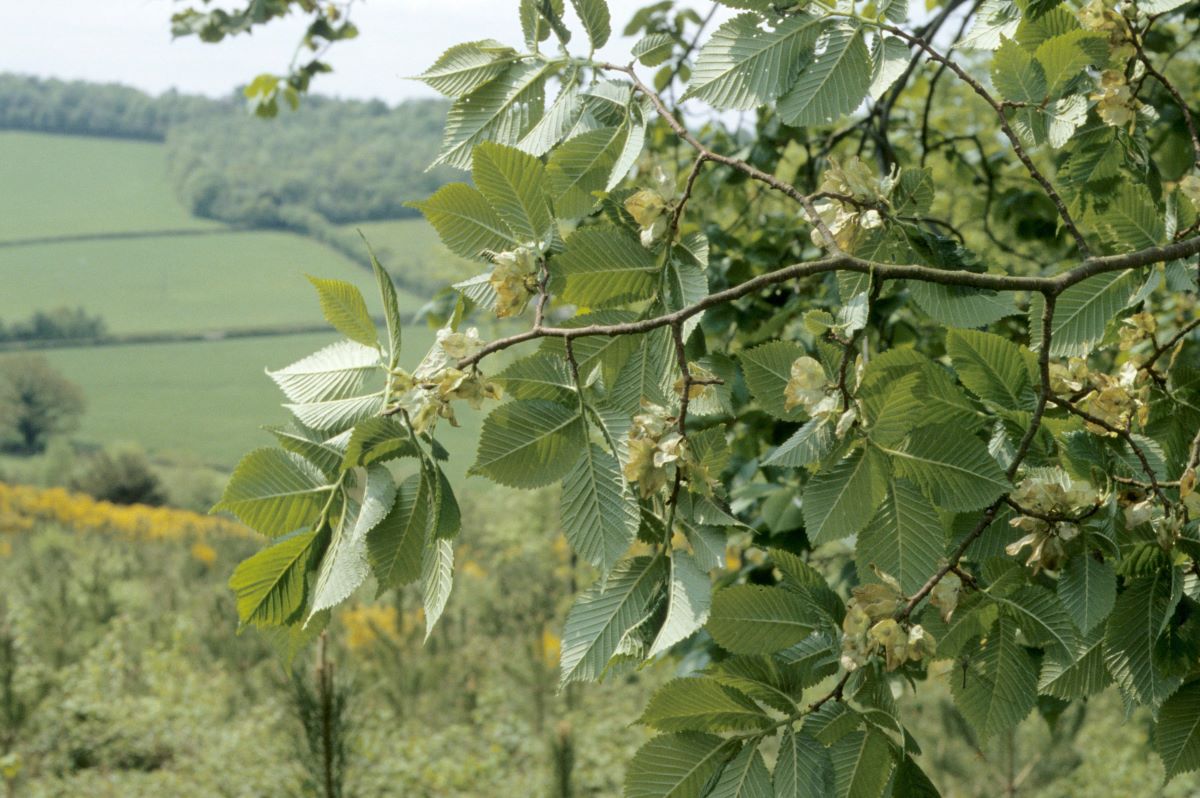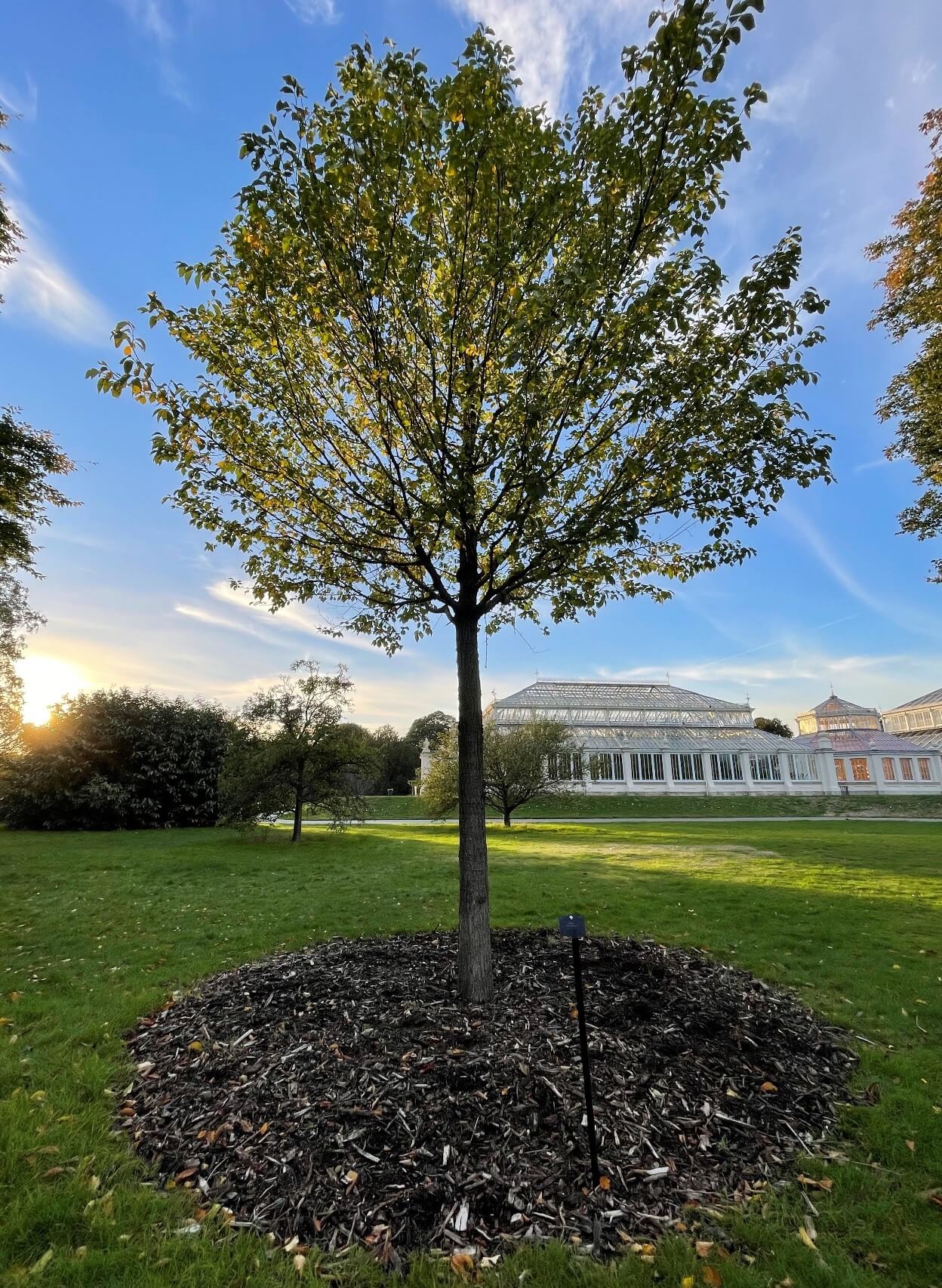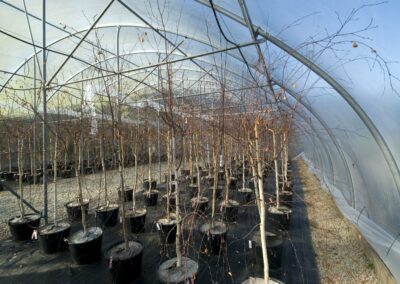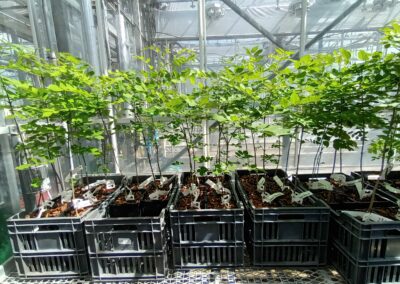Mapping the distribution and diversity of UK elm
Contributors/partners Conservation Foundation; Butterfly Conservation
Project status Complete (March 2022 – April 2025)

Context
Elms support many invertebrates, including the white-letter hairstreak butterfly and white-spotted pinion moth. They are are fast-growing, fix carbon into long-lasting timber valuable for building and furniture making; the timber does not rot in water and has uses in many socio-cultural practices.
Across the UK, young elms regenerate constantly as small trees, surviving 10-20 years before succumbing to Dutch elm disease. The availability of regenerating elms allows the smaller beetle to breed successfully. The larger of the two beetles, which spreads the fungus more effectively, requires the thicker bark of larger elms to reproduce successfully so its population numbers may have declined, but this has not been accurately studied.
European elms have little resistance to O. novo-ulmi but breeding programmes in Europe have crossed resistant Asiatic elms with European species to produce resistant cultivars, although none resemble the familiar field elm or native wych elm. A recent development is the availability of resistant field elm clones, propagated from trees that have survived Dutch elm disease in Spain. Private individuals have already planted ‘resistant’ elm cultivars from continental programmes and cloned older elms which have survived the Dutch elm disease epidemic in Britain, and there is a growing interest in restoring elm to the landscape in this way.
Research aims and objectives
The aim is to understand how resistant elms could perform over the long-term against changing Dutch elm disease pressures. Specific objectives are to:
- Survey the genomic diversity of UK elms including both planted ‘resistant’ elms and older natural survivors
- Build a single accessible database with details of resistant elm plantings and older survivor elms in Britain and map their distribution.
- Evaluate the durability of planted resistant elm cultivars under DED pressure.
- Establish the presence and frequency of the two vector beetle species.
- Use the study findings to underpin future efforts to return mature elms to the landscape.
Project description
Data will be gathered from several field sites. We will identify which beetles are present based on the larval galleries (tunnels chewed through the wood by the beetle larvae) remaining in the bark used for breeding and live beetles if any are collected. The durability of resistance to elms exposed to the beetles will be assessed by evidence of beetle feeding apparent on resistant trees, and whether this is associated with symptom development.
The project will benchmark the genetic diversity of elms in Britain and safeguard survey data on mature elms collected over 40 years by the Conservation Foundation.
DNA will be extracted from samples of both ‘resistant’ and ‘susceptible’ elms across the UK, and the whole genomes will be sequenced. These sequences will be used to identify genetic variations across the sampled populations and to find different ancestral groups. The genetic differences between resistant and susceptible elms will add important information to the selection of trees for restoration efforts.
Outputs
- A database detailing resistant elm collections and their performance under growing conditions in Britain;
- Insights into the genomic diversity of British elms;
- Recommendations to support the return of mature elms to the landscape.

A wych elm in Kew Gardens (photo credit: M. Vatanparast)
Share this project on social media
Related Projects
Our Partners
Social media
Explore
Contact
© 2022 Centre for Forest Protection. All rights reserved.

